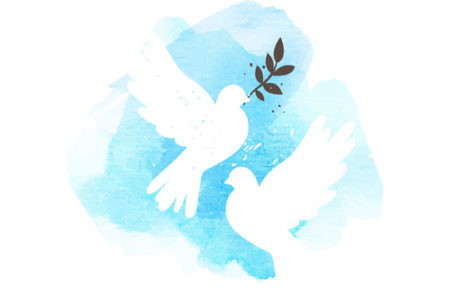A Special Diet
Food, glorious food! We need it to survive. We eat it to celebrate almost any occasion. We offer it in hospitality or comfort. Socially, food somehow helps to build bridges for easier and better communication between people, whether they be friends or strangers. For some, food is in short supply, while others enjoy a wonderful abundance of it.
Special diets or specific preferences for food characterize various cultures. The Jewish people are one such group. Their special food was prescribed by God, presented to His people, and is particular in its preparation.
Having chosen, redeemed, and separated a people for His own, God prescribed a unique lifestyle for them. As a part of that separate lifestyle—which included a dress code, business code, and behavior code—was a dietary code. He presented this diet through His servant Moses, who recorded it in two sections of the Torah: Leviticus 11 and Deuteronomy 14. Contrary to popular belief, this special diet was not given to the Jewish people to promote better health, although it does accomplish that. The dietary code was to set Israel apart from the other nations, to make them a holy people (Lev. 11:45).
Rules concerning the eating of animals, birds, fish, and insects form the major portion of the code. A kosher (fit or proper) animal must meet two requirements: It must chew its cud and have completely split hooves forming two toes. Kosher fish are required to have fins and scales. Certain fowl, such as ostrich, raven, stork, owl, pelican, and eagle, are not fit for consumption. Three kinds of insects—locusts, crickets, and grasshoppers—are permitted to be eaten, though few, if any, indulge. None of the above can be eaten unless slaughtered specifically for consumption.
While their diet was part of a plan to make the Jewish people peculiar, the great sages and rabbis became even more particular. Exodus 23:19 and Deuteronomy 14:21 prohibit the Jewish people from eating a kid (goat) boiled in its mother’s milk, a common practice for the pagans of that day. As a separate people, the Jews were not to participate in such practices. An incredible amount of legislation has been generated from these two verses. This legislation, called Kashrut (proper dietary law), means that meat dishes and dairy dishes (Yiddish, fleishig and milchig respectively) cannot be mixed together. As a result, a kitchen must have one set of pots, pans, utensils, and dishes to be used in the preparation and consumption of meat dishes and another set for dairy foods. A kosher kitchen is equipped with a double sink, one side for washing milchig dishes, the other side for the fleishig.
The method of killing animals for food has also been addressed by the great sages and rabbis. A shoket (ritual slaughterer) must do the killing, thus eliminating conventional hunting for observant Jews. A shoket is a specially trained and very religious person. He draws a chalif (specific knife) across the throat of the animal. With one swift cut, the trachea and esophagus are severed. This procedure is regarded as the most humane for the animal and is the best way to drain the blood. The Bible does not allow consumption of fat or blood (Lev. 3:17). Accordingly, kosher meat must be salted for at least 30 minutes to drain any remaining blood. If this is not done, the rabbis deem the meat to be traif (unclean).
In order to assure observant consumers that the food they are purchasing is kosher, agencies certified by the rabbis are used. The most common symbols for kosher are the and . is the symbol for pareve, which means neutral. Foods considered pareve can be eaten with either meat or dairy and include fruits, vegetables, cereals, coffee—anything grown naturally. Non-dairy milk products can also be considered pareve.
It should be noted that only a small percentage of Jewish people observe the dietary laws, and they do so in varying degrees. Some are very strict and would not so much as drink a glass of water in a non-kosher home. Others keep kosher only in their own homes, while freely dining on non-kosher foods outside the home. For many years it has been an individual choice.
In a day of calorie counting and fat consciousness, people are discovering that the Lord’s special diet is very healthy. This should not be surprising. Paul stated that the law is “holy, and just, and good” (Rom. 7:12). Equally true is Luke’s statement, “What God hath cleansed, that call not thou unclean” (Acts 11:9). Followers of Christ are free to eat (or not eat) whatever they want, providing they know the food was not sacrificed to idols. Sanctification is not accomplished by diet, but by God, as people surrender their lives to Him through Christ. It progresses as we walk in Him. The dietary laws might afford good health, but they will never enhance the spiritual walk of believers. Christ fulfilled the law, and for that we say, “Amen!”
This article has addressed God’s rules for eating. In the next issue we will examine which specific foods Jewish people prefer and are known for. Look out for the Fussy Fressers (Yiddish for eater).







